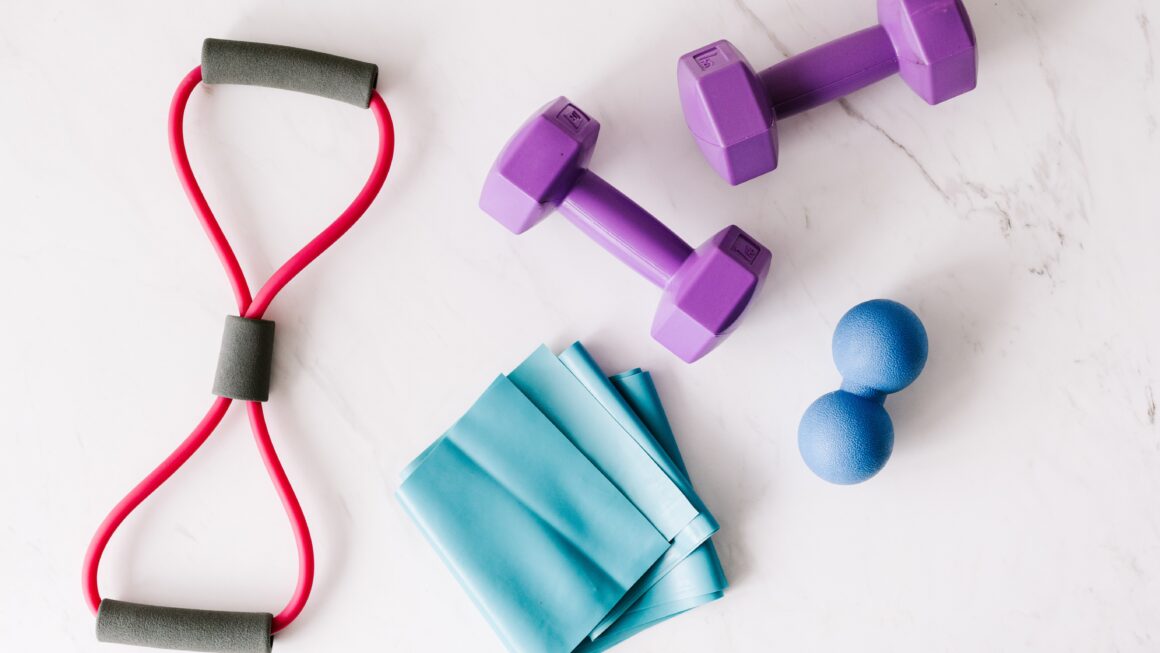Photo by Karolina Grabowska from Pexels
Women face unique health issues that men never have to experience, and one of those health issues is menopause. Menopause means the permanent “pause” of menses, and it is a steady process during which the ovaries reduce their production of the female sex hormones estrogen, progesterone, and testosterone.
Although menopause has many irritating symptoms, changes in body composition may be one of the most frustrating. Weight gain during menopause is common, but there is also a negative shift toward increased abdominal fat, including visceral abdominal fat, which has been linked to metabolic disturbances and increased risk for cardiovascular disease and type 2 diabetes. Visceral fat lies deep within the abdominal cavity and fills the spaces between our abdominal organs.
In addition to increases in fat mass, research has proposed that loss of muscle mass occurs at an accelerated rate, and at an earlier age, in women than in men. This typically occurs around the time of menopause. The three greatest contributors of muscle loss in postmenopausal women are low physical activity, protein intake, and elevated oxidative stress.
Although estrogen plays an important role in inhibiting the production of fat in females, reducing food intake through actions on the hypothalamus, and stimulating leptin expression and secretion from adipose tissue (which decreases appetite); these factors are largely out of our control without hormone replacement therapy. However, we do have control over our physical activity and the type of physical activity we participate in.
All women, regardless of age, should be participating in a strength training program. Strength training can be accomplished with free weights, weight machines, body weight, resistance bands, medicine balls, or even household objects (i.e. Milk jugs filled with sand or water, soup cans, etc.).
Your muscles contain organelles called mitochondria, which are known as “the powerhouse of the cell.” They are responsible for creating usable energy (ATP) and oxidizing (burning) fat.
More muscle= more mitochondria= greater fat burning capacity
Although low-intensity aerobic exercise uses fat as a main fuel source, while high-intensity interval training (HIIT) and weight training utilize mostly carbohydrate, an increase in fat oxidation rates is observed following HIIT and weight training. These post-exercise benefits paired with the benefits of increased muscle mass are what drive positive metabolic outcomes (more fat burning capacity).
In addition to strength training, adequate protein intake, especially in the form of essential amino acids, which can be found in animal sources, is crucial for building muscle. Although the recommended daily allowance (RDA) for protein is 0.8 grams per kilogram (g/kg) of body weight, this is merely the amount needed to meet basic nutritional requirements. In most individuals, this amount is not sufficient for building or maintaining muscle mass, especially in older individuals. Research has demonstrated that at least 1.2 g/kg of body weight is more adequate (and safe) for both older women and men alike. However, if you are strength training regularly, 1.5 g/kg may be appropriate.
Even if physical appearance is not your main concern, muscle mass is important for a variety of reasons. Muscle loss is associated with a number of metabolic, physiologic, and psychologic/cognitive pathologies such as cardiovascular disease, diabetes, osteoporosis and fractures, cognitive decline and depression, and decreased quality of life. Although much attention is focused on the importance of cardiovascular exercise (which is also important), more attention must be given to the importance of strength training and making efforts to retain muscle mass as we age. Regardless of whether you have entered menopause, the best time to begin a strength training program is now!
References:
Bauer, J., Biolo, G., Cederholm, T., Cesari, M., Cruz-Jentoft, A. J., Morley, J. E., … & Boirie, Y. (2013). Evidence-based recommendations for optimal dietary protein intake in older people: a position paper from the PROT-AGE Study Group. Journal of the american Medical Directors association, 14(8), 542-559.
Fungfuang, W., Terada, M., Komatsu, N., Moon, C., & Saito, T. R. (2013). Effects of estrogen on food intake, serum leptin levels and leptin mRNA expression in adipose tissue of female rats. Laboratory animal research, 29(3), 168.
https://www.health.harvard.edu/staying-healthy/abdominal-fat-and-what-to-do-about-it
Kirwan, R., McCullough, D., Butler, T., de Heredia, F. P., Davies, I. G., & Stewart, C. (2020). Sarcopenia during COVID-19 lockdown restrictions: long-term health effects of short-term muscle loss. GeroScience, 42(6), 1547-1578.
Maltais, M. L., Desroches, J., & Dionne, I. J. (2009). Changes in muscle mass and strength after menopause. J Musculoskelet Neuronal Interact, 9(4), 186-97.
About the Author:
Grace Majchrowicz received her undergraduate degree in Exercise Science from Grove City College and her Master’s Degree in Exercise Science with a concentration in strength and conditioning from Indiana University of Pennsylvania. She is a Certified Strength and Conditioning Specialist through the National Strength and Conditioning Association and has designed and helped conduct research studies related to supplementation and performance, exercise and mood, and rest periods as they relate to gains in strength and power. Grace presented two of these research studies at the 2016 and 2017 Mid-Atlantic Regional Chapter meetings of the American College of Sports Medicine and is a published co-author in the Journal of Exercise and Nutrition. As a graduate assistant at Indiana University of Pennsylvania she provided personal training to local volunteer firefighters and performed fitness-based exercise testing for Pennsylvania Police Academy candidates. In her free time she enjoys hiking and spending time with her family.


